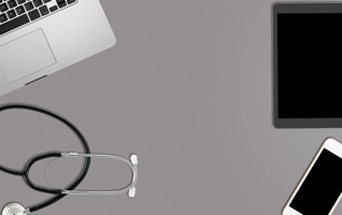 Electronic health records (EHRs) have become ubiquitous part of the health care system. Medical transcription companies provide EHR-integrated documentation solutions to help clinicians manage heavy patient loads with extensive data entry and reporting requirements. A recent study published in the Journal for Nurse Practitioners shows the importance of such support for nurse practitioners (NPs). According to the study, NPs should follow best practices when using computerized health information systems in order to improve the quality of care, ensure accuracy in the record, and protect themselves against the hidden liabilities associated with these systems.
Electronic health records (EHRs) have become ubiquitous part of the health care system. Medical transcription companies provide EHR-integrated documentation solutions to help clinicians manage heavy patient loads with extensive data entry and reporting requirements. A recent study published in the Journal for Nurse Practitioners shows the importance of such support for nurse practitioners (NPs). According to the study, NPs should follow best practices when using computerized health information systems in order to improve the quality of care, ensure accuracy in the record, and protect themselves against the hidden liabilities associated with these systems.
As of October 2015, over 479,000 health care providers received payment for participating in the Medicare and Medicaid Electronic Health Records Incentive Programs. In April 2016, the Centers for Medicare and Medicaid Services (CMS) proposed a rule to replace meaningful use for Medicare physicians and establish key parameters for the new Quality Payment Program, an agenda that includes the Merit-based Incentive Payment System and Alternative Payment Models.
Computerized health information systems are routinely used by NPs to document patient information. These also often serve as clinical data repositories that are shared among health care professionals and support medical billing processes. However, as the study points out, these systems pose many problems for NPs:
- Detracts from the patient experience: EHR data entry prevents the NP from maintaining eye-to-eye contact with the patient. It stands in the way of discussions about the patient’s health status, test results, or prescribed medications
- Difficult data entry: Cumbersome templates and rigorous data entry requirements can lead to errors. Prescribing, transcribing, dispensing, and administering can be disjointed and result in medication administration errors. Other issues that could cause medication errors include difficult-to-use screen and font sizes, auto-correct or auto-fill functions, insufficient LED lighting, and a lack of hand-held devices used to bar code scan medications, and delayed access to lab results or a lack of interoperability with other systems.
- Risk of malpractice liability caused by online patient charting: The study found that online charting caused problems that increased medical malpractice risks. These include:
- Mistakes due to the tendency to copy-paste information from previous exams
- Templates that are narrow in scope and do not allow entry of data suggesting alternative diagnoses
- Risks posed by ignoring the continuous alerts and recommendations that EHRs provide
- Attempt to maintain medical record integrity with late entries and charges
- Failure to document or incomplete/inaccurate documentation, including not transferring all information from the paper chart to EMR or EHR, failure of NPs to sign their notes, or checking boxes indicating that services were performed without providing supporting documentation
The study also noted that as clinical decision-making is based on real-time information, NPs can face care issues when they have only partial or incomplete medical data when dealing with a patient. This could occur when the medical record system is offline and no back-up is available or when patient medical data is held in the form of both electronic and paper charts.
The author recommends several measures that can help NPs protect themselves and their patients:
- Participate in in-house training that supports the EMR or EHR in their practice or hospital.
- Learn how to work with the system to ensure accuracy in the record
- Be aware of the hidden liabilities associated with these systems and follow best practices when entering information, especially with annotations, addenda, and corrections after patient visits.
Outsourcing medical transcription is also a proven strategy to ensure accuracy in patient records. Trained and experienced medical transcriptionists in a reliable US based medical transcription company would be well-equipped to help NPs and physicians ensure error-free EHR data entry to improve patient care, increase efficiency and protect themselves against malpractice litigation or licensing issues.


